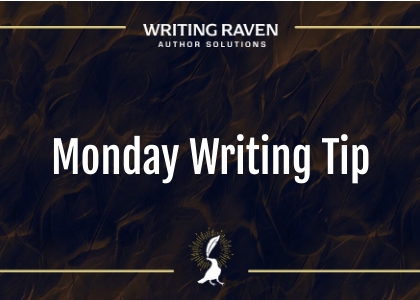- Misty Evans
- March 25, 2024
- 7:58 am
This year, Writing Raven Author Solutions is breaking down the 15 beats of writing a bestselling novel based on the three-act structure for you.
In our continuing look at writing beats of fiction storytelling, this week, we continue with set-up.
Before we do that, I want to mention that we’ve added over a dozen new premade covers to our store! Check them out here: https://writing-raven.com/premades
Crafting an engaging story involves a balance of pacing, character development, and plot progression. One key element is the “set-up,” often referred to as the third beat in Blake Snyder’s Save The Cat methodology.
This crucial phase establishes the ordinary world of the protagonist before they are thrust into the extraordinary, setting the stage for the coming drama and conflict.
The set-up serves multiple functions:
Showing the main character(s) in their natural habitat provides insight into their personality, motivations, and everyday routines. It creates a sense of familiarity and empathy, making it easier for your readers to connect with the characters on a deeper level.
Establishing the status quo of the story world gives you an opportunity to introduce key locations, relationships, and themes that will play a significant role in the progression of the plot. Whether it’s a bustling cityscape, a quaint countryside village, or a sprawling fantasy realm, the setting acts as a backdrop against which the characters’ actions and decisions unfold.
Perhaps most importantly, the set-up lays the groundwork for the inciting incident (we’ll look at this next week)—the catalyst that disrupts your main character’s ordinary life and sets them on the path of the plot. By establishing a sense of normalcy before the impending upheaval, you can contrast the before and after, highlighting the impact of the inciting incident on your MC’s life.
Here are two easy tips to use set-up effectively:
Use dialogue. By employing dialogue that reflects the characters’ unique voices and perspectives, you can convey essential information while also advancing the plot. Subtle nuances in speech patterns, tone, and vocabulary can offer clues about their backgrounds, values, and motivations.
Use sensory details. Bring the protagonist’s everyday world to life for your readers, immersing them in the sights, sounds, and smells of the main character’s life. Whether it’s the aroma of freshly brewed coffee in a bustling cafe or the sound of children laughing in a neighborhood park, vivid descriptions create a sense of place and time.
By allowing readers to experience your main character’s world firsthand, you can forge a deeper emotional connection and lay the groundwork for the transformative journey that lies ahead.
Through skillful characterization and immersive storytelling techniques, you can captivate audiences and immerse them in the world of your story.
💡 Need inspiration for your story? Here are three well-known fiction set-ups:
1. Harry Potter and the Sorcerer’s Stone by J.K. Rowling. In the opening chapters of the first book in the Harry Potter series, readers are introduced to the mundane life of the young orphan who lives with his neglectful aunt, uncle, and cousin. Rowling masterfully sets the stage by depicting Harry’s dismal existence in the cupboard under the stairs, his longing for a sense of belonging, and his mysterious encounters with strange occurrences, such as letters arriving by owl post. This set-up effectively establishes Harry’s ordinary world before he discovers his true identity as a wizard and embarks on a magical adventure at Hogwarts School of Witchcraft and Wizardry.
2. The Great Gatsby by F. Scott Fitzgerald: Fitzgerald begins his classic novel with the narrator, Nick Carraway, reflecting on his move to Long Island and his observations of the extravagant lifestyle of his neighbor, Jay Gatsby. Through Nick’s eyes, readers are introduced to the opulent parties, shallow socialites, and underlying tensions of 1920s America. This set-up immerses readers in the glittering yet superficial world of the Jazz Age elite, setting the stage for the tragic tale of love, ambition, and disillusionment that unfolds as Nick becomes entangled in Gatsby’s enigmatic pursuit of the American Dream.
3. The Hunger Games by Suzanne Collins: Collins establishes the dystopian world of Panem in the opening chapters of her novel, painting a grim picture of a society divided into impoverished districts ruled by a tyrannical Capitol. Through the eyes of protagonist Katniss Everdeen, readers witness the harsh realities of life in District 12, where survival is a daily struggle, and the annual Hunger Games serve as a brutal reminder of the Capitol’s power. By grounding readers in Katniss’s impoverished yet resilient community, Collins sets the stage for Katniss’s journey as she volunteers to participate in the Hunger Games to protect her sister, setting off a chain of events that will challenge her beliefs and ignite a rebellion against the oppressive regime.
Your set-up is a vital component of your story, serving as the foundation upon which the rest of it is built. Introduce your MC’s everyday world and pave the way for the dramatic events that will unfold.
Write with Radiance,
The Writing Ravens
If you’ve enjoyed this article and would like a more in-depth breakdown of how to use these tools, as well as a few more, consider joining our subscription program to access our Premium Content. https://writingravenauthorsolutions.substack.com/subscribe?
Grab your copy of Writing Raven’s Breaking Down the Beats Worksheet here: http://writing-raven.com/product/breaking-down-the-beats-writing-exercise

